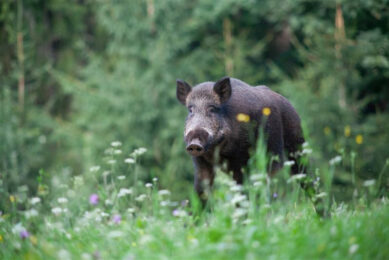Feeding sorghum
Sorghum has re-surfaced recently as an alternative cereal, especially in Western Europe, where imports, particularly from the US, are more economically feasible. Of course, there is nothing new about sorghum, as many farmers in Kansas will readily attest. I recall diets in this state based entirely on sorghum, with no problems at all in growth performance or carcass quality. But, let’s start from the beginning!
Sorghum has re-surfaced recently as an alternative cereal, especially in Western Europe, where imports, particularly from the US, are more economically feasible.
Of course, there is nothing new about sorghum, as many farmers in Kansas will readily attest. I recall diets in this state based entirely on sorghum, with no problems at all in growth performance or carcass quality. But, let’s start from the beginning!
Background
Sorghum (Sp. vulgare) is grown extensively in Northern Africa and Middle East (mostly of the type Dari), and in the Southern USA (where the type Milo is more common). Its chemical composition and nutritive value is quite similar to maize (corn), especially that of Milo, which is of most importance to our discussion here.
The nutritive value (energy) of Milo sorghum is usually taken at 90 to 100% compared to maize. Its protein profile is deficient in lysine and threonine.
Carcass quality from sorghum-fed pigs is similar to that from maize-fed pigs, which in turn is quite softer compared to wheat/barley-fed pigs.
Tannin
Sorghum contains tannins (condensed) that reduce palatability and subsequently feed intake and growth. Tannins also reduce amino acid digestibility.
Tannin levels range from 0.2 to 2%, and obviously it is best to use sorghum with the lowest level of tannins. In general, yellow varieties of sorghum contain low(er) levels of tannins, whereas Milo contains less tannins than Dari shorgum.
As a rule of thumb, sorghum containing less than 0.5% tannins may be used freely in all pig formulas, except for those destined for pigs less than 6 kg in body weight (creep feeds and prestarters).
Between 0.5 and 1% tannins, it is best to limit sorghum contribution in a diet at 50% of total cereals. For example, if cereals make up 70% of a diet, sorghum should not exceed 35% in the diet. Sorghum with over 1% tannins should be used in gradual amounts, starting from 5-10% in piglets and lactating sows, and reaching up to 20% in finishing pigs and gestating sows.
Guidelines
Of course, these are practical guidelines and they should be adjusted according to the nature and inclusion levels of other ingredients participating in the formula and the overall quality of sorghum. Like most ingredients with antinutritional factors, it is best to start by being conservative!
Extruding sorghum does not yielded superior performance, so this is not recommended, especially for growing-finishing pigs and sows.
On the other hand, fine grinding of sorghum is strongly recommended to improve nutrient digestibility and consequently the efficiency of feed utilisation.
Grinding sorghum to 600 microns is considered an optimal compromise between animal performance and grinding efficiency (energy consumption).











